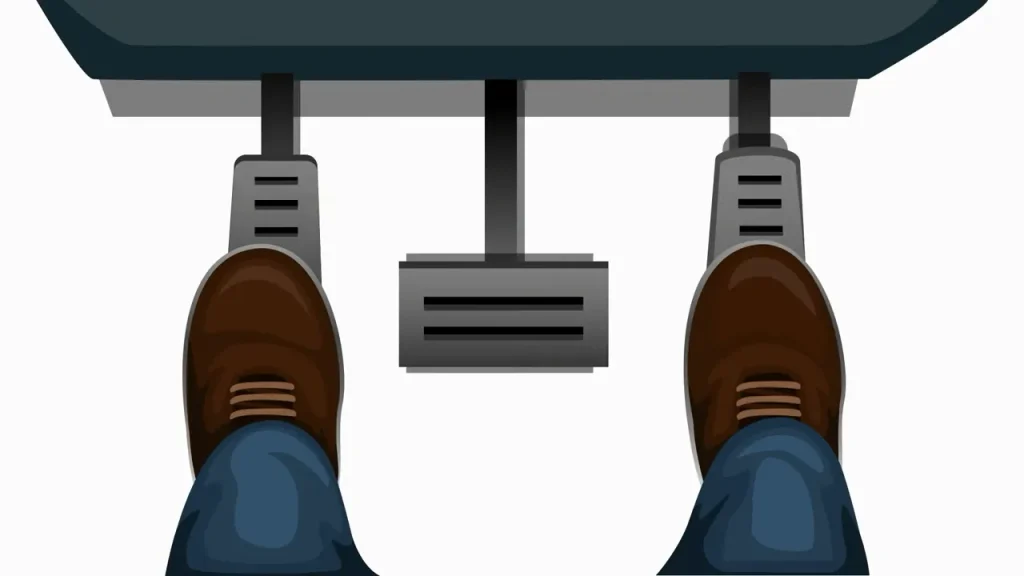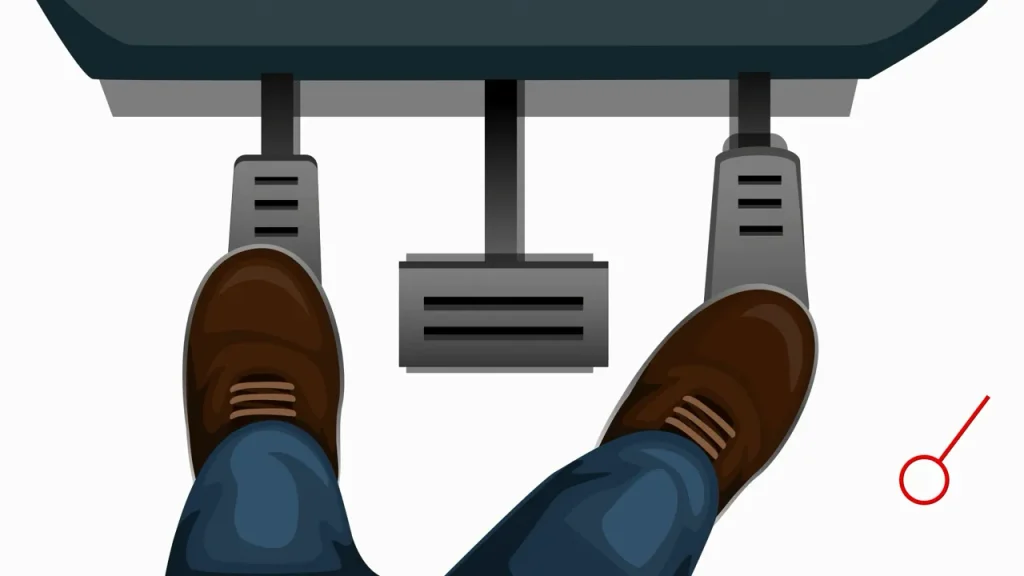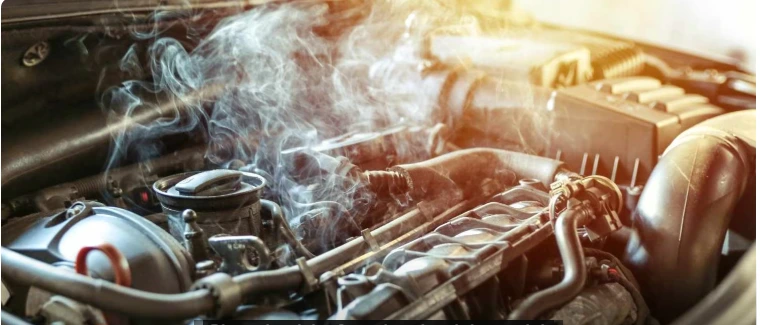Which One Is the Brake [The Left or Right Pedal?]
Brake pedals play a crucial role in vehicle control and are essential for safe driving. Understanding which pedal operates the brakes is fundamental knowledge for every driver. Being aware of this information ensures that you can effectively slow down or bring your vehicle to a complete stop when necessary. The proper operation of brake pedals is vital for maintaining control, avoiding accidents, and ensuring the safety of yourself, passengers, and other road users.
In this article, we will explore the significance of knowing which pedal operates the brake and emphasize the importance of this knowledge for a safe driving experience.
Short Answer:
The brake pedal is located on the left side in most vehicles. It is essential to know that the left pedal operates the brakes to ensure safe driving. Pressing the brake pedal slows down or stops the vehicle, allowing you to maintain control and respond to traffic situations effectively.
What is Pedal Configuration
Pedal configuration refers to the arrangement and positioning of pedals in a vehicle. In most automobiles, the pedal configuration consists of two primary pedals: the accelerator (gas) pedal and the brake pedal. These pedals are located on the floor of the driver’s side in front of the driver’s seating position.
The accelerator pedal is typically positioned on the right side and is used to control the speed of the vehicle. By pressing down on the accelerator pedal, fuel is delivered to the engine, increasing the engine’s RPM and causing the vehicle to move forward.
On the other hand, the brake pedal is usually located on the left side, closer to the driver’s door. When the driver presses down on the brake pedal, it activates the hydraulic braking system, applying friction to the vehicle’s wheels and ultimately slowing down or stopping the vehicle.
It is important to understand the pedal configuration and their respective functions to ensure safe and precise operation of the vehicle’s acceleration and braking systems. By being familiar with the pedal positions and functions, drivers can effectively control their speed and respond to changing road conditions and traffic situations.

The Right Pedal: Accelerator or Brake?
The right pedal in a vehicle is the accelerator or gas pedal. It is responsible for controlling the speed of the vehicle. By pressing down on the right pedal, more fuel is delivered to the engine, increasing the engine’s RPM and causing the vehicle to accelerate and move forward.
It is essential to distinguish between the accelerator pedal and the brake pedal, as confusing the two can lead to unsafe driving situations. The accelerator pedal should be operated with care and used to maintain a safe and controlled speed while driving.
The Left Pedal: Brake or Clutch?
The left pedal in a vehicle can have two different functions depending on the type of transmission.
1. Automatic Transmission: In vehicles with automatic transmissions, the left pedal is the brake pedal. Pressing down on the left pedal activates the hydraulic braking system, applying friction to the vehicle’s wheels and allowing you to slow down or bring the vehicle to a complete stop.
2. Manual Transmission: In vehicles with manual transmissions, the left pedal is the clutch pedal. The clutch pedal is used in conjunction with the gearshift to engage or disengage the engine from the transmission. It allows the driver to change gears smoothly by temporarily disconnecting the engine’s power from the transmission.
Importance of Knowing the Brake Pedal
Knowing which pedal operates the brake, particularly the location of the brake pedal, is of utmost importance for safe driving. Here are a few reasons why it is crucial to be aware of the brake pedal:
1. Emergency Situations: In sudden or unexpected situations where you need to stop your vehicle quickly, being able to locate and press the brake pedal promptly can make a significant difference in preventing accidents or collisions.
2. Controlling Vehicle Speed: The brake pedal allows you to regulate your vehicle’s speed by slowing down or bringing it to a complete stop when necessary. Understanding the position and operation of the brake pedal enables you to effectively control your vehicle’s speed and maintain a safe distance from other vehicles.
3. Hazard Identification: Knowing the brake pedal helps you identify potential hazards on the road. If you observe a hazardous situation ahead, you can quickly react by applying the brake pedal to reduce your vehicle’s speed and avoid a collision.
4. Maneuvering in Traffic: Proper use of the brake pedal is essential when navigating through heavy traffic or congested areas. Understanding the location and responsiveness of the brake pedal allows you to smoothly adjust your speed, maintain a safe distance from other vehicles, and respond to traffic flow.
5. Overall Vehicle Control: The brake pedal is a crucial component of maintaining control over your vehicle. Being familiar with the brake pedal’s position and function ensures that you can efficiently modulate braking force, execute smooth stops, and navigate various driving conditions with confidence.

Developing Good Driving Habits
Developing good driving habits is essential for safe and responsible driving. Here are some key habits to consider:
1. Stay Focused
Always maintain your focus on the road and avoid distractions like mobile devices, eating, or engaging in other activities that take your attention away from driving.
2. Obey Traffic Laws
Adhere to speed limits, traffic signals, and road signs. Follow all traffic laws and regulations to ensure your safety and the safety of others.
3. Maintain a Safe Distance
Keep a safe following distance from the vehicle ahead of you. This allows for adequate reaction time and reduces the risk of rear-end collisions.
4. Use Turn Signals
Signal your intentions early and clearly when changing lanes, making turns, or merging into traffic. This helps other drivers anticipate your actions and promotes smoother traffic flow.
5. Check Mirrors Frequently
Regularly check your rearview and side mirrors to be aware of your surroundings. This helps you monitor traffic, spot approaching vehicles, and make informed driving decisions.
6. Avoid Aggressive Driving
Stay calm and avoid aggressive behaviors such as tailgating, excessive speeding, or sudden lane changes. Maintain a respectful and courteous attitude towards other drivers.
7. Practice Defensive Driving
Anticipate potential hazards and be prepared to react. Keep an eye out for potential dangers, such as erratic drivers, pedestrians, or road hazards, and adjust your driving accordingly.
8. Use Seatbelts
Always wear your seatbelt and ensure that all passengers are properly restrained. Seatbelts significantly reduce the risk of injury in the event of a collision.
9. Maintain Vehicle Safety
Regularly check and maintain your vehicle’s brakes, tires, lights, and other crucial components. A well-maintained vehicle is safer and more reliable on the road.
10. Stay Sober
Never drive under the influence of alcohol, drugs, or any impairing substances. Impaired driving is extremely dangerous and can have severe consequences.
FAQ:
Q: Which pedal in a car is the brake, the left or the right?
A: The brake pedal in a car is located on the left side.
Q: Why is the brake pedal on the left side?
A: The positioning of the brake pedal on the left side is a convention followed in most vehicles, especially those with automatic transmissions. It allows for consistent pedal placement across different vehicle models and makes it easier for drivers to locate and access the brake pedal with their left foot.
Q: Is it the same in all vehicles?
A: While the left pedal is generally associated with the brake pedal in most vehicles, it is essential to note that certain exceptions exist. In vehicles with manual transmissions, the left pedal is the clutch pedal, which is used for shifting gears. However, in the majority of vehicles with automatic transmissions, the left pedal is indeed the brake pedal.
Q: Why is it important to know which pedal operates the brake?
A: Knowing which pedal operates the brake is crucial for safe driving. It allows drivers to quickly and accurately locate the brake pedal in emergency situations, effectively slow down or stop the vehicle, and maintain control while on the road.
Q: What are the consequences of confusing the accelerator and brake pedals?
A: Confusing the accelerator and brake pedals can have serious consequences, such as unintended acceleration or delayed braking response. This confusion can lead to accidents, loss of control, and potential harm to oneself and others on the road. It is vital to familiarize oneself with the pedal positions and functions to ensure safe and confident driving.
Q: Are there any differences in pedal configuration in different countries?
A: While the convention of placing the brake pedal on the left side is prevalent in many countries, it is essential to note that pedal configurations may vary in some regions or specific vehicle models. It is advisable for drivers to familiarize themselves with the pedal configuration of the specific vehicle they are operating.





